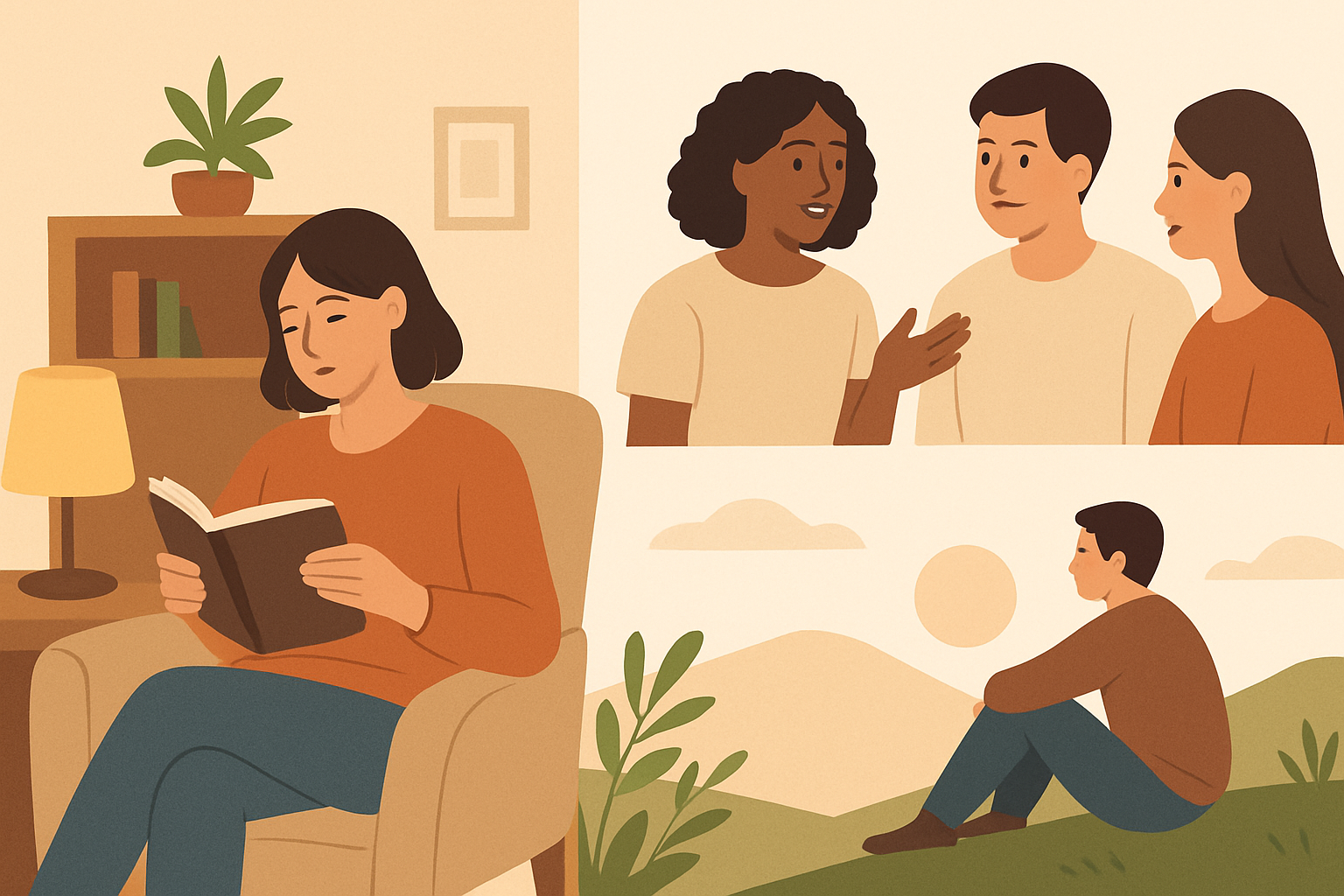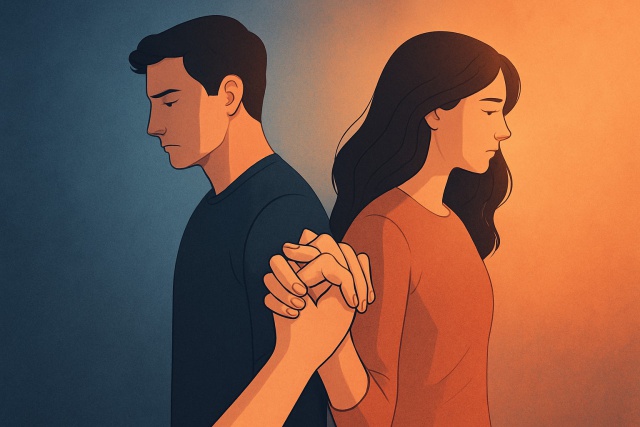This article cuts through the usual clichés to help you appreciate introversion and discover how to not just survive but thrive with an introverted nature.
- Get a down-to-earth understanding of what introversion truly means and how it’s not just shyness or social anxiety—there’s more nuance than most individuals realize.
- Learn to recognize classic introvert traits in your day-to-day life like the need to quietly recharge and favor certain ways of communicating that feel just right.
- See how introversion shows up in different parts of life—at work, with friends and in family dynamics—often in subtle or unexpected ways.
- Find practical tips to embrace your introverted side without feeling drained while juggling your energy and social moments like a pro.
Understanding the signs of introvert symptoms can really help individuals get a clearer picture of their own personality quirks and navigate social situations a bit more smoothly.
Defining Introversion So What It Really Means to Be an Introvert
Introversion is a key personality trait characterized by a preference for quiet, low-key environments and a real need to recharge by spending time alone. It’s not the same as shyness, which is more about feeling anxious or nervous in social settings.
- Introverts usually lean toward quieter activities or cozy little gatherings rather than jumping into big social whirlwinds.
- They often crave calm surroundings to really focus and recharge their batteries after spending time around people.
- Reflecting deeply and mulling things over tends to come as naturally to them as breathing.
- Introverts typically listen with genuine care and choose their words thoughtfully, as if each one counts.
- They often shine brightest in meaningful one-on-one conversations, where small talk feels more like filler than fun.
There are plenty of myths swirling around introversion like the idea that it’s the same thing as social anxiety or the assumption that introverts simply don’t enjoy being around people.
How to Spot Signs of Introversion in Everyday Life (Without Feeling Like You’re Reading a Psychology Textbook)
Introvert traits tend to reveal themselves as comfortable, natural preferences and everyday habits—not as signs of any disorder.
- Leaning toward deep one-on-one chats or small cozy group conversations instead of big social gatherings.
- Craving quiet time alone to recharge after hanging out with others.
- Spending time pondering or reflecting before jumping in with words or actions, sometimes savoring that mental pause.
- Tending to listen more than talk during conversations and valuing true understanding over filling the silence.
- Choosing to mull things over and share thoughts carefully rather than blurting them out right away.
- Often feeling wiped out or overwhelmed in noisy jam-packed places where the buzz never stops.
- Turning to writing or the creative arts as a trusted refuge to express feelings in a private personal way.
Introvert traits usually sneak into two buckets: internal and external. On the inside, you might find a bustling inner dialogue and moments of deep emotional reflection that most people do not see coming. From the outside looking in, it is often a calm quietness or a reserved way of simply carrying oneself that catches your eye.
How Introvert Symptoms Can Fluctuate Depending on the Situation and Personality Nuances
Signs of introversion can show up in many ways and shift with a person’s age, cultural background or unique personality quirks.
- Introverts often lean toward thoughtful written communication instead of jumping into spontaneous verbal meetings because they prefer crafting their words carefully rather than winging it on the spot.
- They usually value depth and trust much more than keeping up a big social network, so quality definitely beats quantity in their book.
- Family relationships can really shape how openly introverts show their need for alone time. Sometimes it becomes a delicate dance to balance togetherness and personal space.
- When the pressure is on, introverts tend to pull back more as a way to cope. It is like hitting the pause button to recharge before jumping back in.
- Meeting new people might make some introverts come off as reserved, while others pick and choose when to warm up and engage. This proves there is no one-size-fits-all playbook here.
An introverted employee tends to shine when working on tasks solo. Open-plan offices can sometimes feel like a bit much but they generally thrive in quieter corners. Meanwhile, an introverted parent might gently nudge their kids to enjoy some alone time while still carving out space for meaningful family moments.
Common Misunderstandings About Introvert Symptoms That Often Fly Under the Radar
Introversion is often misunderstood and this fuels common myths that introverts are shy, cold or unhappy. These mistaken notions overshadow the real deal behind introversion.
- Introverts often get labeled as antisocial, but in reality many cherish deep and meaningful connections more than anything else.
- The common notion that introverts just don’t like people is completely off base, as they tend to be more selective about who they spend their social energy on.
- Being shy and being introverted are two different things. Introverts can actually be quite confident when they step into the social spotlight.
- Introverts aren’t naturally gloomy or more prone to depression, that’s just a stereotype that doesn’t hold up.
- Just because someone is introverted doesn’t mean they can’t lead. In fact, many introverts run the show with their thoughtful and empathetic style that truly makes an impact.
"\u003E "Introversion isn’t some glitch in the system or a character flaw—it’s a perfectly natural, healthy slice of the human personality pie. It’s more like having a unique lens on the world, one that offers its own quiet strengths and thoughtful insights." — Dr. Susan Cain, psychologist and author of ‘Quiet’
Practical Tips for Recognizing and Handling Your Introvert Traits (Because Let’s Face It, We All Have Them)
Introverts usually thrive once they embrace their natural tendencies and learn to manage their energy carefully. It often comes down to planning ahead, clear communication, and focusing on interactions that genuinely count.
- Carve out regular breaks to recharge your batteries after social or work events without nagging guilt.
- Set clear boundaries by gently letting friends and colleagues know when you need peace and quiet.
- Choose social activities that truly resonate with you rather than those that feel like ticking off a box or surface-level chit-chat.
- Lean into solo activities like journaling, walking or meditation to gently reset your emotions and find your center.
- When the moment feels right, share a bit about your introverted side. It can help others understand where you’re coming from.
- Make the most of tech tools like noise-cancelling headphones or productivity apps to carve out focused spaces that play to your introverted strengths.
Recognizing common introvert symptoms, friends and coworkers can really do introverts a solid by respecting their need for a little peace and quiet, rather than nudging them to jump into every social shindig.





